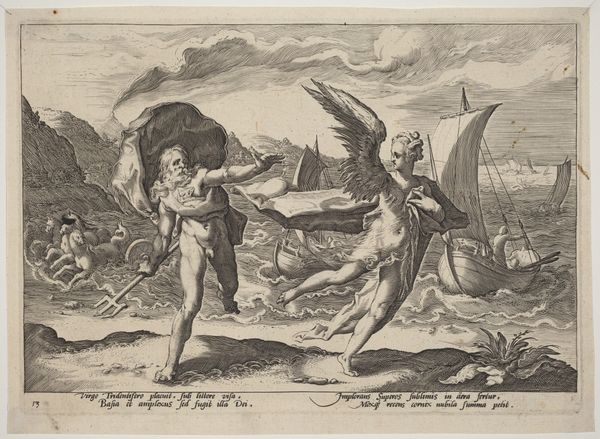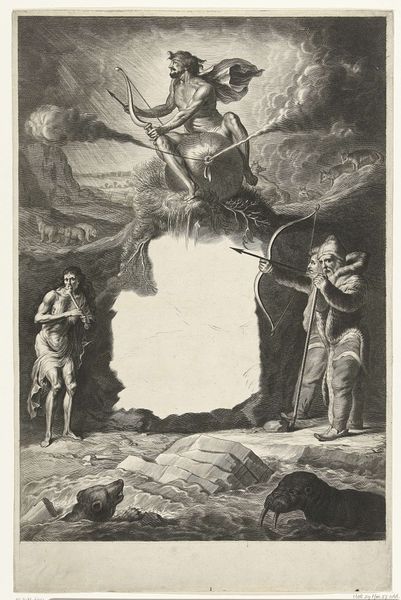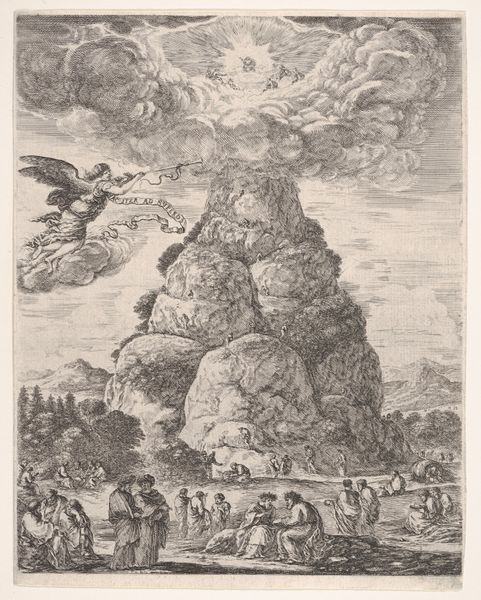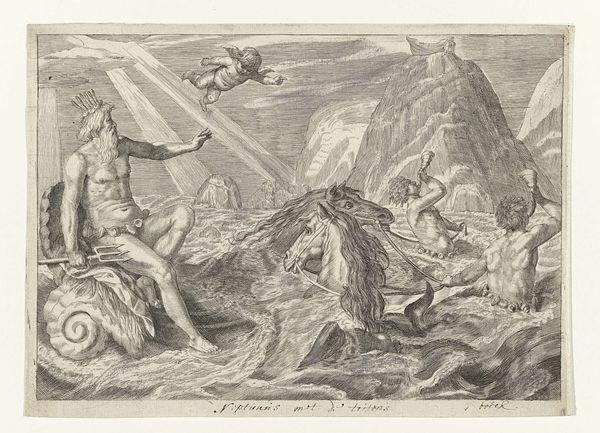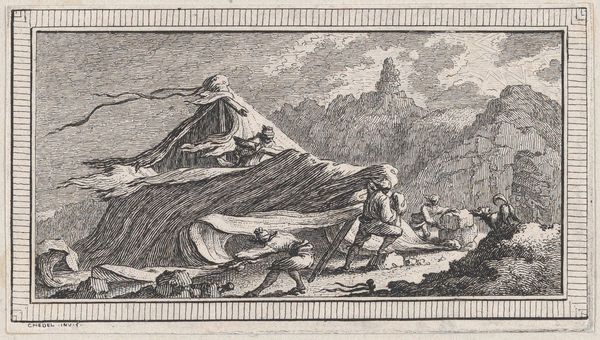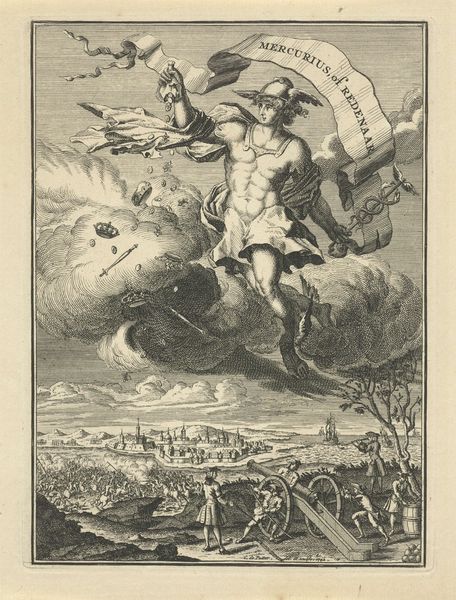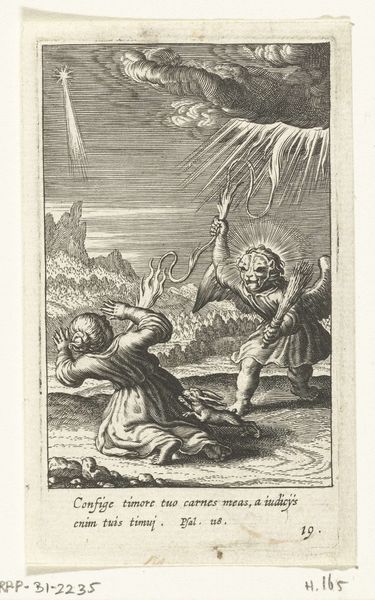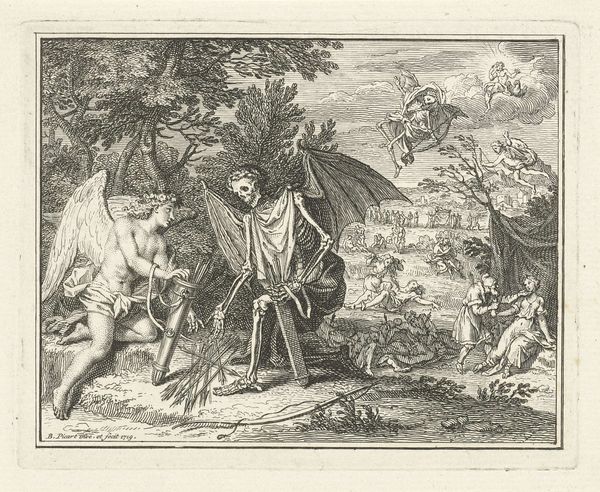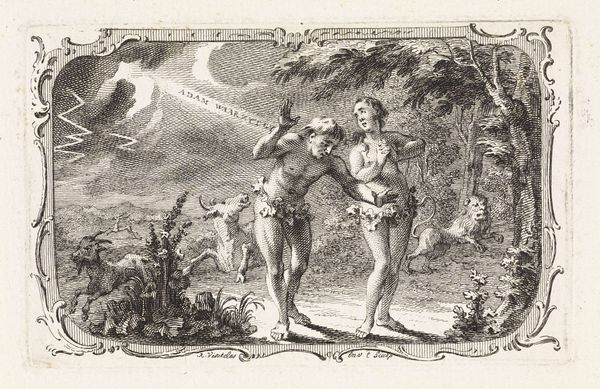
Book 4, Fable 13: the treasure (Le trésor) 1719
0:00
0:00
drawing, print, engraving
#
drawing
#
baroque
# print
#
history-painting
#
engraving
Dimensions: Sheet (Trimmed): 3 1/8 × 3 13/16 in. (8 × 9.7 cm)
Copyright: Public Domain
Editor: We’re looking at “Book 4, Fable 13: the treasure (Le trésor),” an engraving by Nicolas Henry Tardieu from 1719. It feels very classical, a bit like something you'd see illustrating an ancient myth. The figure with the sword facing off against a dragon immediately creates a scene of conflict. What's your take on it? Curator: This piece immediately draws my attention to the inherent power dynamics at play. We have this classical hero, armed and seemingly divinely sanctioned, pitted against a mythical beast, often coded as chaotic and untamed. But let’s think critically: Who defines what is "treasure," and for whom is it truly valuable? Is this a tale of valor or of colonial conquest disguised in allegory? Consider how these narratives historically justify the displacement and dispossession of marginalized communities under the guise of taming the "savage." Editor: That's a perspective I hadn't considered! So, you see the dragon not just as a monster, but almost as a symbol of something else? Curator: Exactly! The dragon, in its otherness, becomes a stand-in for those who are perceived as obstacles to the hero's, and by extension, society's progress. This image begs the question: Whose story is being told, and whose is being erased in the process of claiming this "treasure?" What happens to the dragon's hoard – where does that wealth ultimately end up? Whose hands profit from the hero's victory? Editor: It completely shifts the narrative! It is no longer just a battle, but it becomes a reflection on societal structures. Curator: Precisely. It is crucial to examine these images with a critical eye, understanding them not as simple illustrations, but as powerful cultural artifacts that reflect and reinforce prevailing ideologies and power structures. These artworks reveal much about gendered roles, social privilege and biases and cultural expectations during the baroque era and maybe our own. Editor: This has certainly opened my eyes. I'll never look at these old myths in the same way again!
Comments
No comments
Be the first to comment and join the conversation on the ultimate creative platform.

